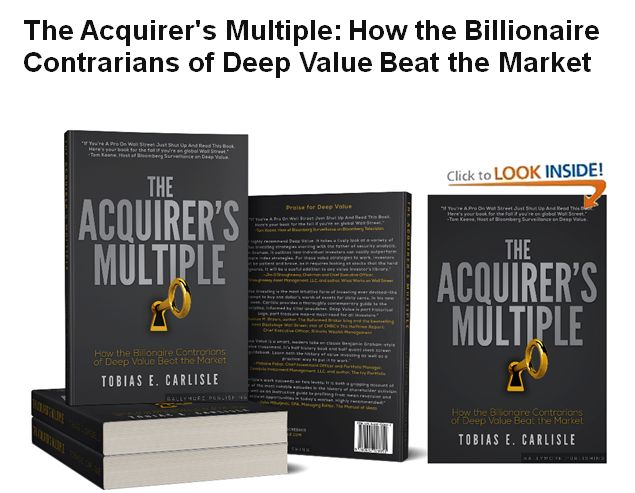During their recent episode, Taylor, Carlisle, and Ian Cassel discussed How Michael Melby Achieves 22.4% Returns in Small-Cap Deep Value Investing. Here’s an excerpt from the episode:
Ian: I apologize for this being such a monologue, but you have a guy like Michael Melby as an example. We were talking a little bit about him earlier at Gate City Capital. He’s in a horrible factor like deep value and [laughs] small cap deep value. And yet, he’s put up a 22.4% net CAGR over 13 years in an awful factor like that. And of course, as an investor, you sit up a little straight in your chair and you’re thinking, well, small cap value has averaged 8.5% percent over 14 years, and he’s doing 22.4% net. What’s he doing differently?
When you dive into what he does, it gets really interesting. A lot of it doesn’t sound like anything really novel or unique. He’s basically deep value concentrated in 15 ideas to 18 ideas, two year hold on average, so 40% turnover a year. Looks at old economy businesses that have hard assets, land, real estate, so they can go up with inflation.
He is very, very disciplined on his DCF modeling. Always a 12.5% percent discount rate, never budgets it up or down depending on how he feels about the market. He’s very consistent. They’ve just done a lot of work over 350 names that fit their sweet spot in the US and Canada. I think the one area that I would say he does something really, really unique in is the fact that he focuses on quality management teams in a deep value type of style investing. I think that is probably the focus of his fine-
Jake: That’s his leg lock?
Ian: underappreciated thing. He literally goes out and visits every single company. With the management team, sits down with them, interviews them, tours their facilities. When you talk to him, he’s like, “Yeah, we probably pass on 30% of the companies that we visit just because there’s something we don’t like when we see it in person, or whether it’s the interaction with the management team or the assets themselves.” I think he’s done an interesting job of finding that skill of really valuing management, because as we all know, deep value, it’s mainly, “All right, let’s find some assets we can buy cheap enough where we don’t have to even value or even do any management analysis,” you know?
Jake: Yeah.
Ian: And so, I think he’s innovated on that, and that’s created this alpha and he’s done it consistently. But anyway, that’s my rambling answer to– I think the difference between a goat and a great investor are really those investors that really dive deep. They do all the basics really, really well, and they form that pattern recognition. And then, obviously, over time, the watchlist of 300 companies to 400 companies becomes your sustainable edge that you did work on 5 years or 10 years ago. All that work you did 5 years or 10 years ago in that same subset of companies allows you to see around corners the next time around with that same company. That’s helps amplify that edge over time too. But anyway, that’s my rambling thought that I was journaling about over the last couple days I thought I’d share.
Jake: Yeah, I love it.
You can find out more about the VALUE: After Hours Podcast here – VALUE: After Hours Podcast. You can also listen to the podcast on your favorite podcast platforms here:
For all the latest news and podcasts, join our free newsletter here.
Don’t forget to check out our FREE Large Cap 1000 – Stock Screener, here at The Acquirer’s Multiple:



